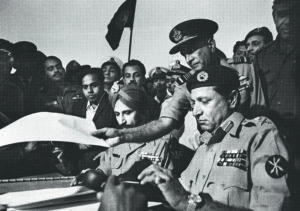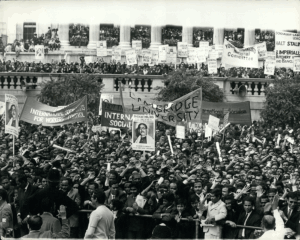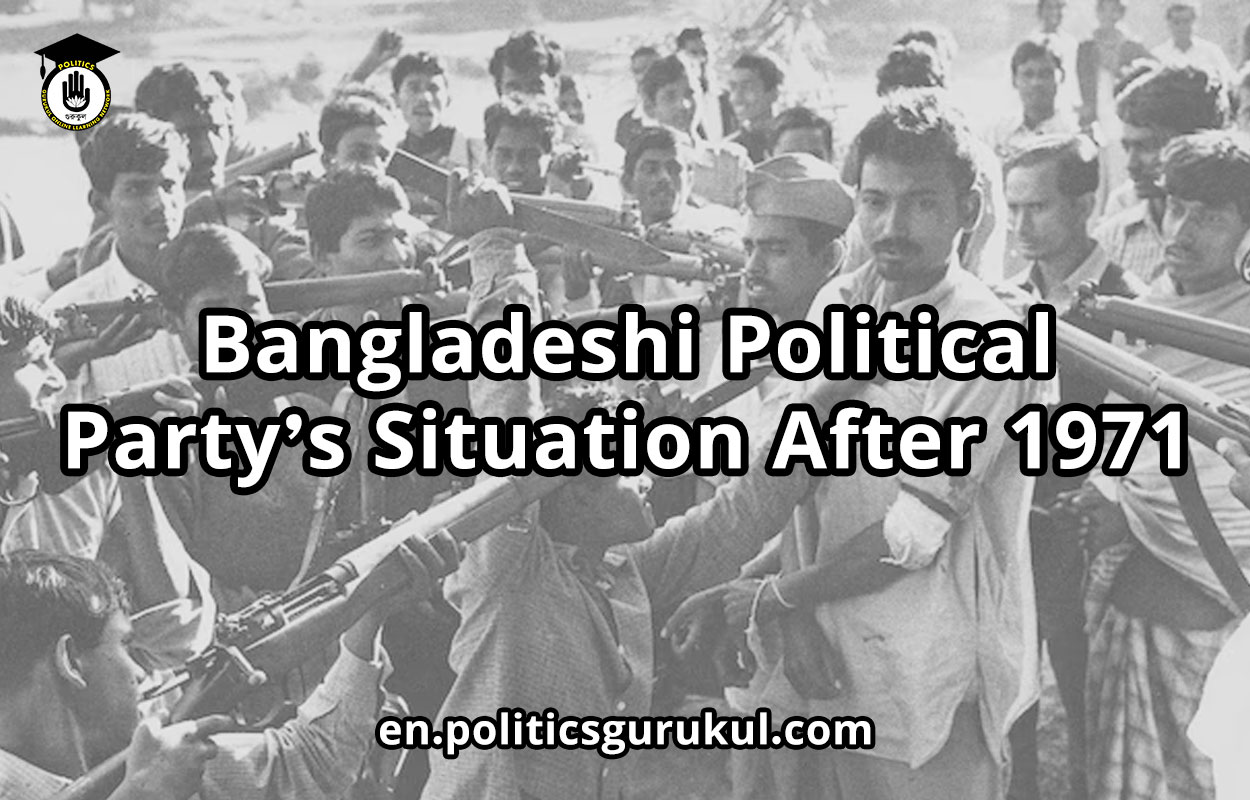The independence of Bangladesh in 1971, following a brutal nine-month-long war of liberation, marked the beginning of a new chapter in the political history of the country. The post-independence period was characterized by both the euphoria of freedom and the challenges of nation-building, governance, and creating a stable political environment. The political landscape of Bangladesh after 1971 was shaped by the rise and fall of various political parties, military coups, political unrest, and the struggle to establish a democratic system.
Bangladeshi Political Party’s Situation After 1971
Emergence of the Awami League
The Awami League (AL), under the leadership of Sheikh Mujibur Rahman, played a crucial role in leading the liberation movement and was the dominant political force after independence. Sheikh Mujib became the first Prime Minister of Bangladesh, and his government undertook the mammoth task of rebuilding a war-torn country. The Awami League’s victory in the first general elections of 1973, with an overwhelming majority, signified the people’s support for Mujib’s leadership and vision of a socialist, secular Bangladesh.
However, the government faced significant challenges, including the rehabilitation of millions of refugees, economic instability, widespread poverty, and managing the expectations of the people. Despite the initial popularity, the Mujib government faced increasing criticism for its inability to address economic crises, food shortages, and political discontent.

Introduction of One-Party Rule
In 1975, Sheikh Mujibur Rahman introduced a radical change to the political system by abolishing multi-party democracy and establishing a one-party state under the banner of BAKSAL (Bangladesh Krishak Sramik Awami League). This move was intended to create a more unified political system to address the nation’s growing challenges, but it alienated many political actors and led to increased dissatisfaction. The political opposition, including the leftist and rightist groups, strongly opposed this authoritarian shift, which ultimately created deep divisions within the political environment.
Military Coups and the Assassination of Sheikh Mujibur Rahman
The one-party rule did not last long, as Bangladesh experienced a significant political upheaval on August 15, 1975, when Sheikh Mujibur Rahman was assassinated in a military coup. This tragic event marked the beginning of a period of military dominance in Bangladeshi politics, which would last for several years.
Following the assassination, a series of coups and counter-coups destabilized the country. Major General Khaled Mosharraf took control briefly, only to be overthrown, and eventually, Major General Ziaur Rahman emerged as the key figure in Bangladesh’s political arena. Under Zia’s rule, a new phase in Bangladeshi politics began, as the military sought to legitimize its hold on power by involving itself in political processes.
The Rise of the Bangladesh Nationalist Party (BNP)
Ziaur Rahman founded the Bangladesh Nationalist Party (BNP) in 1978 to consolidate his power and provide a political platform for his government. The BNP promoted a more nationalist, right-leaning ideology, countering the secular, socialist vision of the Awami League. Zia’s government focused on economic liberalization, decentralization of power, and fostering diplomatic relations with Islamic nations, moving away from the secular and socialist policies of Sheikh Mujib’s government.
Zia held general elections in 1979, in which the BNP secured a significant victory, marking the party’s firm establishment in Bangladesh’s political sphere. However, Zia’s tenure was cut short when he was assassinated in a coup attempt in 1981, leading to another period of instability.
The Era of General Ershad
After Zia’s death, General Hussain Muhammad Ershad seized power in 1982 through a bloodless coup, beginning nearly a decade-long military dictatorship. Ershad formed the Jatiya Party (JP) to gain political legitimacy and dominated the political scene throughout the 1980s.
Ershad’s regime was marked by his focus on Islamization, moving away from the secular principles on which Bangladesh was founded. In 1988, he declared Islam as the state religion, further distancing the nation from its secular origins. His government also initiated infrastructure development and administrative reforms but was marred by allegations of corruption, political repression, and human rights abuses.
Pro-Democracy Movements of the 1990s
Throughout the 1980s, opposition to Ershad’s authoritarian rule grew. The Awami League, led by Sheikh Hasina (the daughter of Sheikh Mujibur Rahman), and the BNP, now led by Begum Khaleda Zia (the widow of Ziaur Rahman), became the two primary forces in the fight for the restoration of democracy. In the early 1990s, massive pro-democracy protests, strikes, and civil unrest finally forced Ershad to step down in 1990.
The transition to democracy was marked by the first truly competitive general elections in 1991, which saw Khaleda Zia’s BNP win a majority. Khaleda became the first female Prime Minister of Bangladesh, marking a new democratic era in the country. The political system was restructured with the introduction of a parliamentary system, enhancing the role of the Prime Minister and the legislature.

Bipartisan Rivalry: Awami League vs. BNP
Since the 1990s, Bangladeshi politics has been dominated by the rivalry between the Awami League and the BNP, with Sheikh Hasina and Khaleda Zia at the forefront of their respective parties. The competition between these two parties has often been intense, leading to frequent political deadlocks, strikes, and even violence.
The 1996 general elections saw the Awami League return to power under Sheikh Hasina, but the BNP regained power in 2001. This cyclical power shift continued, with both parties accusing each other of corruption, vote-rigging, and political repression. The deep-rooted animosity between the two leaders has often led to a polarized political environment, stalling critical policy reforms and development initiatives.
The Caretaker Government Crisis
In 2007, amidst political turmoil and accusations of election rigging, a military-backed caretaker government took control, postponing the general elections. This period, known as the caretaker government crisis, saw both Sheikh Hasina and Khaleda Zia arrested on corruption charges, creating a vacuum in political leadership. However, in 2008, elections were held, and the Awami League returned to power with a landslide victory, marking the beginning of Sheikh Hasina’s long tenure as Prime Minister.
Contemporary Political Landscape
Since 2008, the Awami League has maintained its dominance in Bangladeshi politics, winning successive elections in 2014 and 2018. Sheikh Hasina’s government has focused on economic development, infrastructure, and international diplomacy, while the BNP has struggled to regain its former political influence, especially after boycotting the 2014 elections.
Despite the relative political stability under the Awami League, concerns about democratic backsliding, restrictions on freedom of speech, and political opposition remain prominent issues. The future of Bangladeshi politics will likely continue to revolve around the Awami League and the BNP, as both parties try to navigate the challenges of governance, democracy, and development in an increasingly complex global environment.
The political situation in Bangladesh after 1971 has been dynamic and tumultuous, marked by the rise and fall of political parties, military interventions, and a long-standing rivalry between the Awami League and the BNP. While the country has made significant progress in terms of democracy and development, challenges such as political polarization, corruption, and democratic governance continue to shape its political trajectory.
See More:
